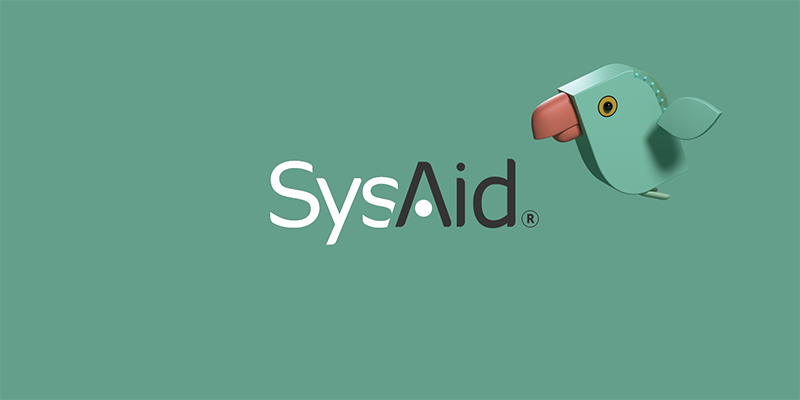10 IT Predictions for 2016

Anyone can predict the future, although whether they are right or not is a different matter. Just look at the Y2K predictions, or those stating that online shopping would never take off. Or that the Apple iPhone would never sell – I bet Nokia was relieved to hear this back in 2007.
There must be lots of cloud predictions too – in particular that large companies wouldn’t adopt cloud or even software-as-a-service (SaaS) due to security concerns. Finally, if you want to go old-school technology, that the Titanic was unsinkable.
Despite these, the tech media will no doubt be full of 2016 predictions as the New Year approaches. And neither this prediction blitz nor my list of failed technology predictions is enough to stop me from using my crystal ball…
My 2016 IT Predictions in Summary
In my opinion, 2016 will be characterized by power shifts as corporate IT, and the technology it employs, transforms at an exponential rate. The impact of these power shifts will affect line of business attitudes to IT supply, and corporate IT budgets and priorities; which will in turn change technology vendor approaches.
Importantly, it’s not just about the changing technology but also how corporate IT is viewed and how the supply and demand models required to meet growing business requirements for technology need to change.
Many of my predictions have already started to appear during 2015, via early adopters, and will continue to become mainstream in 2016.
1. The Balance of IT Power Leans Away from Technology Vendors
2. Developers Move from the Basement to the Boardroom
3. Developer Experience Is No Longer a Cute Vendor Marketing Play
4. Vendors Increasingly Sell Technology Directly to Lines of Business
5. SaaS Becomes the Main Cloud Battlefield
6. Frameworks Avoid the Waste of “Samework”
7. IoT Drives Exponential Growth of Data and Connectivity
8. Malware Combat and Breach Reduction
9. Service Management Breaks Free from IT
10. Chat Overtakes Microblogging in Social
Here are these ten predictions in more detail…
1. The Balance of IT Power Leans Away from Technology Vendors
Some very large organizations such as Royal Phillips, GE, and JPMC have not only adopted cloud, they have also ripped up their IT supply approach to lean towards line-of-business IT procurement and consumption. What this means is that they have eliminated central IT-driven procurement contracts – which are often seen as out of touch, and wasteful and limiting – and moved vendors to consumption-based agreements with no upfront costs, no lock-in, no minimum use, and pay-as-you-go billing.
Many vendors are already responding. For instance, Microsoft is modifying its popular Enterprise Agreement program to be consumption-focused, meaning that customer dollars are targeted at the consumption of Office 365 and cloud units instead of CPUs or other old-fashioned licensing constructs. Those vendors that resist, such as SAP did with Royal Phillips, will lose their direct relationship with the customer – as the customer inserts a service provider as a gateway, or middleman, between them.
2. Developers Move from the Basement to the Boardroom
During 2016, the perception that developers are basement-dwelling, socially-awkward techies with no grasp on business reality will continue to be shattered. As “software eats the world,” and as companies change their core competency from “shifting atoms” to using software to delight customers, developers will become distributed across lines of business and into the C-suite as they create business processes in software in real time.
As a result, companies will need to publicly change their image, as well as change their internal thinking, to adopt approaches such as Open Source to attract the best developer talent. Developers are now touted by thought-leading industry analyst firms, such as RedMonk, as the new “kingmakers,” and businesses need to start to treat them as such.
3. Developer Experience Is No Longer a Cute Vendor Marketing Play
Developer experience (DX) will be a key strategic activity for vendors due to the emergence of developer-centric approaches such as “Developer-Driven Infrastructure” and “Developer is King,” all championed through cloud computing. In the past, if a vendor had a DX program it was commonly a marketing function that funded developer-friendly programs, such as free not-for-resale (NFR) licenses and other carrots, to tempt developer alliances to the vendor.
In 2016, DX will become commonplace and freebies will be complemented with deeper relationship-building activities, such as “hackathons.” Especially in industry verticals such as healthcare and FinTech where the vendors and developers co-create value using APIs and open-source software. This has also spawned a new industry of “API evangelists,” and new vendors, who step in front of traditional vendors to help developers create innovative new platforms.
4. Vendors Increasingly Sell Technology Directly to Lines of Business
Shadow IT has been around for a number of years, and if you’ve ever worked on an IT service desk you know that it is at least 15 years old. Recent technology changes have upped the stakes for Shadow IT and lines of business are increasingly eschewing central IT functions and going straight to the technology vendors themselves, especially cloud vendors. Key to this is the line-of-business departments not needing deep, traditional IT skills; with modern Shadow IT purchases mostly of the software-as-a-service (SaaS) variety, such as CRM and customer support, IT service management (ITSM) and IT service desk, and marketing applications.
Of the traditional IT vendors, Oracle in particular has seen and responded to this. Understanding that there is a gap between the huge enterprise IT market and the current cloud leaders, AWS and Azure, who are still mostly focused on infrastructure-as-a-service (IaaS). But who knows where AWS and Azure will head in 2016?
5. SaaS Becomes the Main Cloud Battlefield
SaaS was always marked as the biggest cloud model, bigger than IaaS or platform-as-a-service (PaaS), but it has taken some time for this to be reality. And SaaS upsets traditional vendor revenue models because the vendors can’t recognize the revenue upfront and their age-old, sales-team compensation model is broken.
Some of the software giants have kept pace though. Microsoft has been making this transition for a number of years, so it’s well placed to be at the front of the field with its Office 365, Business Intelligence, and Dynamics suites. And, as I mentioned in my previous point, Oracle has responded to the gap in the market, with CEO Larry Ellison feeling that he has “primed the pump” to be number one in the SaaS market, which he sees as unfulfilled, potentially-significant profit.
6. Frameworks Avoid the Waste of “Samework”
2015 saw the rise of PaaS after years of promise. CloudFoundry became a foundation consisting of customers and vendors; new alliances emerged with RedHat’s OpenShift now playing nice on Azure; and Pivotal continued to shout the loudest from the highest hilltop. Netflix open-sourced much of their operationally-minded PaaS components, with these now included in CloudFoundry, such that PaaS offerings are very complete.
These “opinionated PaaS” frameworks can help organizations to “get there faster” by not needing to reinvent things such as log-in mechanisms, monitoring systems, or identity and access management systems. The more opinionated a platform is, the less needs to be built for the platform to be functional and operational. In my opinion, any corporate IT developers not using an opinionated PaaS in 2016 should be questioned thoroughly as to why they are reinventing the wheel.
7. IoT Drives Exponential Growth of Data and Connectivity
There are already a number of excellent business IoT use cases and these will explode, across a variety of industries, where significant investment has been earmarked. These industries include healthcare, aviation, home automation, and civil infrastructure among others.
As IoT sensors become smaller and cheaper, and thus more ubiquitous, they will both require more wireless connectivity and will generate huge amounts of time-series data. Such data has unique properties such as large occurrences of small, unchanging sensor-data writes and variable-frequency big-data reads on the same data. Combined these will drive more cloud usage (the essential characteristics of broad network access and elastic capacity being essential for IoT) and new database systems such as Basho’s Riak TS.
8. Malware Combat and Breach Reduction
Sadly, more than 90 percent of corporate security breaches are caused by employees being hijacked by malware or suckered by phishing to reveal their credentials to criminals.
In 2016, multiple factors of access security will become the norm to replace the username and passwords we are all so familiar with. For instance, using authentication code generators on mobile phones. New security software will interpret email attachments and applications embedded in browsers, such as PDF browsers, to decompose the content, check it against known safe formats (using whitelists), and recompose it correctly before passing it on to the end user.
9. Service Management Breaks Free from IT
ITSM people, process, and technology frameworks such as ITIL have come under significant criticism in the last few years due to their perceived inability to keep up with the changing IT landscape. In 2016, leading thinkers in this space will continue to push for ITSM to not be about IT but instead to be about high quality delivery and management of any kind of service, be it HR (to employees), sales (to customers), or IT (to developers).
This doesn’t mean that IT isn’t important in the delivery of the service, as 2016 will see the continued dominance of easy-to-use, intuitive, and beautifully-designed service management tools. Instead, it means that in 2016 the focus will not be purely delivering IT services, but delivering any service.
10. Chat Overtakes Microblogging in Social
Email used to be a non-core service but today’s businesses most likely couldn’t operate without this ubiquitous messaging platform. However, we all know that it comes with problems, such as spam, reply-to-all storms, and malware. Companies then used wikis and blogging platforms like Microsoft SharePoint to reduce email. Then they introduced internal social media platforms such as Yammer. Companies like Atos even adopted a zero-email policy and bought their own social media platform.
All of these will continue to have a place but 2016 will see the rise of “chat platforms,” such as Slack, which have taken the decades-old Internet Relay Chat (IRC) idea and transformed it into something new to disrupt collaboration. These new chat platforms also open their APIs to allow innovation on top of them, which in 2016 will be a classic platform play to make them ubiquitous in the workplace.
So that’s ten technology predictions from me, what do you expect to see happening to or within corporate IT in 2016?
Did you find this interesting?Share it with others:
Did you find this interesting? Share it with others:








